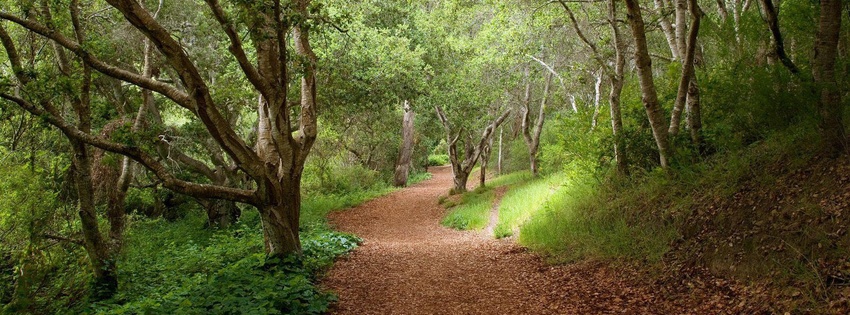More and more scientific research demonstrates the health benefits for humans to spend time with and in nature. So could this apply to coaching conversations? The answer is a resounding yes. For over five years I have been offering many types of coaching conversations outside and the results have been profound.
The following is a review of how natural environments can deepen the coaching conversation making them memorable and special experiences for both the client and the coach.
Nature is in our DNA
Our connection to nature is in our DNA which explains why we have an affinity with all living things. In 1984, Harvard biologist Edward O. Wilson described this conceptas “Biophilia”. There is an intuitive link between nature and well-being. Wilson observed that nature uniquely influenced the human mind and had the potential to influence cognitions and behaviours.
Many studies have found that people strongly prefer natural settings over man-made environments and globally these preferences cross cultures. All you have to do is check out office cubicle artwork, travel photos, and potted plants to witness humanities desire to bring more nature into homes and offices.
Selhub & Logan’s 2012 book Your Brain On Nature presents research showing that “exposure to nature-based environments is associated with lower blood pressure and reduced levels of the stress hormone cortisol … and is also responsible for higher levels of activity in the branch of the nervous system responsible for calming us down” (p. 3). Yes I know we all have stores that can attest to the fact that getting outside definitely diffuses stress and improves health!
There is plenty of literature written about the human – nature relationship. Richard Louv’s (2011) The Nature Principle suggests that modern society is struggling Nature Deficit Disorder and that people need to get outside for daily doses of Vitamin N. And in the January 2016 Issue of National Geographic Magazine the positive impacts of nature were cited. “When we get closer to nature—be it untouched wilderness or a backyard tree—we do our overstressed brains a favor”.
Coaching Conversations aux Naturél
So knowing how good nature makes us feel, I believe it is important to include a natural component into every coaching conversation. Whether you walk and talk, find a special sit spot, or work in a green office, coaching with and in nature offers some valuable advantages.
Endless possibilities are created outside when we work with natural metaphors and symbols. Seasons, cycles, plants, animals, insects, soil, and water can all inform and catalyze powerful breakthroughs during the coaching process.Often we invite nature right into our conversations. Sometimes a little breeze or buzzing mosquito nudges an insight or provides an answer.
As an attunement or settling in step, clients are asked what part of nature they notice. Using a nature tray on the set of Leap – the Coaching Movie I asked my client Rob what he was drawn to among the little bits of nature items on the tray. Selecting a snail shell he proceeded to share how this emotionally represented how he hid within his shell to protect himself. This opened the door for us to talk about taking down the wall that separated him from connecting with others.
Another profound example of change came about after a number of outdoor springtime sessions. A mother struggling with ‘empty nest syndrome’ came to the realization that it was natural and normal for parenthood to biodegrade. This awareness allowed her to accept the end of her role as an active parent and move on with the rest of her life.
Walking in nature helps the mind to quiet. While walking, the body moves and everything that is stuck in the mind, can more easily start to clear. A conversation that takes place in the open, offers space for moments of silence and reflection. This natural third space holds much unspoken wisdom to come forth.
Eye contact is not always necessary while walking and talking or overlooking a beautiful vista. This makes it easier to express issues that are difficult, embarrassing, or painful. Crying outside is profoundly freeing and extremely healing. One male client cried for the first time in years on one of our walks.
Outside in nature, we literally and figuratively move outside our own world and familiar pathways. We step outside of normal routines and into new environments. We explore different trails helping to discover new horizons. Throughout this journey we begin to become more receptive for unknown experiences, views, and initiatives.
And just as good coaches are taught to acknowledge a bright spot or life spark in clients, we must remember to express gratitude to the natural environment which helped co-create the coaching session and for life in general. We always ask permission when entering the natural world and then give thanks for wisdom shared at the end of our time together.
Inviting nature to become a part of the coaching conversation adds another dimension to the process of change. When exposed to nature people in general sink more deeply into their conversations and often have more profound shifts of awareness. When was the last time you took that important conversation outside?
Carol Koziol
References
Louv, R. (2011). The nature principle: Reconnecting with life in a virtual age. Chapel Hill, NC: Algonquin Books.
Selhub, E. & Logan, A. (2012). Your brain on nature: The science of nature's influence on your healthy, happiness, and vitality. Mississauga, Canada: John Wiley & Sons Canada, Ltd.
Williams, F. (2015, December 8). This is your brain on nature. National Geographic Magazione. Retrieved from http://ngm.nationalgeographic.com/2016/01/call-to-wild-text









